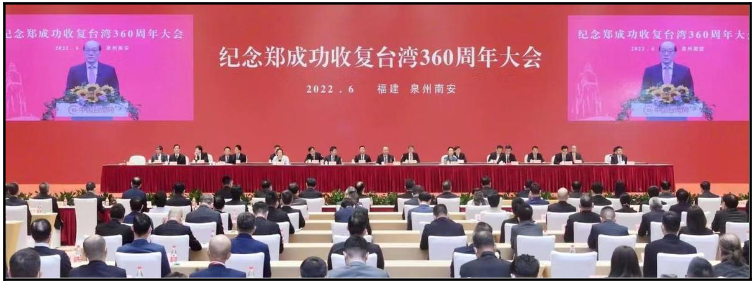US Navy Sails Two Naval Vessels through the Taiwan Strait
The Trump administration has authorized the transit of two US Navy vessels through the Taiwan Strait. Two US Navy Arleigh Burke-class guided missile destroyers sailed up from the South China Sea through the Taiwan Strait into the East China Sea over the weekend. According to US Pacific Fleet spokesman Capt. Charlie Brown to USNI News: “Two US Navy ships conducted a routine transit through the international waters of the Taiwan Strait on July 7-8. […] US Navy ships transit between the South China Sea and East China Sea via the Taiwan Strait and have done so for many years.” This is not the first transit made by the US Navy through the Strait, or even the first under President Donald Trump, but it is occurring against the backdrop of Beijing’s intensifying political warfare operations that some say are turning the Taiwan Strait into its “internal waters.”
This is the second publicly known transit made by the US Navy through the Strait—the narrow channel dividing Taiwan and China—under the Trump Administration. The first US Navy vessel known to sail the Strait was in July 2017 and it was the USS John McCain—a month after Beijing poached Taiwan’s longest-standing diplomatic ally Panama. The Obama Administration is believed to have made similar transits through the Taiwan Strait, but they were not reported.
The most recent US Navy transit is occurring as China has turned up the heat against Taiwan with a significant increase in its military activities around the island. In addition to a substantial uptick in aerial exercises conducted by the Chinese military around the island, the PLA(N) has sailed its maiden aircraft carrier with a combination of warships through the Taiwan Strait at least five times since January 2017. The Liaoning aircraft carrier first sailed through the Strait in January 2017—a month after the phone call between then-president elect Trump and President Tsai Ing-wen—and twice in July 2017. In 2018, the Liaoning aircraft carrier sailed through the Strait in January and most recently again in March. These exercises were coupled by massive live-fire exercises in the area in April 2018, which was its first PLA(N) naval exercise in the waters since September 2015.
The last time that the United States sailed an aircraft carrier through the Strait was over a decade ago in 2007 during the George W. Bush Administration. The reasons that the US Navy gave for why the USS Kitty Hawk made, what it called the “normal navigational transit of international waters,” was that “the route selection was based on operational necessity, including adverse weather.” While there had reportedly been a typhoon nearby at the time, the passage also immediately followed Beijing’s refusal to allow USS Kitty Hawk to dock at Hong Kong harbor for a long-planned stopover. It was speculated at the time that Beijing’s decision may have been motivated by its anger with then US plans to help Taiwan upgrade its missile system, a meeting between former President Bush and the Dalai Lama, or PLA war games in the vicinity. Although the Trump Administration reportedly considered plans to sail an aircraft carrier through the passage earlier this year, it ultimately did not pursue that option.
The transit by the US Navy through the Taiwan Strait further underscores the legal status of the Taiwan Strait. According to one legal scholar from Taiwan:
… the provisions regarding the freedom s of navigation and overflight provided in the UNCLOS apply to the Taiwan Strait. This means that US warships and aircraft are entitled to the rights of navigation and overflight in and over the waters beyond the outer limit of Chinese as well as Taiwanese 12 n.m. territorial sea in the Taiwan Strait.”
This legal interpretation was also reinforced by then-commander of the now renamed Indo-Pacific Command. In response to questions concerning the 2007 transit through the Strait by USS Kitty Hawk, Admiral Timothy Keating’s stated, “[w]e don’t need China’s permission to go through the Taiwan Strait, it is international waters. We will exercise our free right of passage whenever and wherever we choose, as we have done repeatedly in the past, and will do in the future.”
Reacting to the most recent passage of US Navy vessels through the Taiwan Strait, the People’s Republic of China (PRC) State Council Taiwan Affairs Office (TAO) Liu Jieyi criticized the United States for playing the so-called “Taiwan card” (台灣牌), claiming that US behavior has damaged the interests of the people of Taiwan and those of the entire Chinese people, and ought to be opposed by the compatriots on both sides of the Taiwan Strait.
The July transit by USS Mustin (DDG-89) and USS Benfold (DDG-65) through the Taiwan Strait follows another tangible act by the Trump Administration of rescinding the invitation for China to participate in the biennial Rim of the Pacific naval exercises in May, which had been called for by Asia specialist and GTI adviser Shirley Kan. After the 2016 exercise, Kan wrote:
The United States needs to show strength with strategic signals, serious actions, and international leadership. The United States will look silly and weak after RIMPAC 2016 if the PLA is embraced only to have the regime in Beijing then claim a “South China Sea ADIZ,” coerce a US ally, or provoke collisions with US or allied aircraft and ships.
According to Pentagon spokesman Lt. Col. Chris Logan: “China’s continued militarization of disputed features in the South China Sea only serve to raise tensions and destabilize the region. […] As an initial response (emphasis added by author of article) to China’s continued militarization of the South China Sea we have disinvited the PLA Navy from the 2018 Rim of the Pacific Exercise.”
The innocent passage by US Navy vessels through the Taiwan Strait is not occurring within a vacuum. Beijing has been intensifying its pressure campaign on Taiwan. While such transits are routine, the decision to sail the US Navy vessels through the Taiwan Strait represents an important demonstration and reassertion at this time of the fact that the US views the Taiwan Strait as international waters. As a Pentagon spokesman stated: “We [United States] have a vital interest in upholding the current rules-based international order, which features a strong, prosperous and democratic Taiwan.”
The main point: While transits by US Navy vessels through the Taiwan Strait is routine, the decision to sail them through the Taiwan Strait at this time, as Beijing turns up the heat on Taiwan, represents an important demonstration and reassertion of the fact that the US views the Taiwan Strait as international waters.
Taiwan’s Critical Role in the Global Coalition against Da’esh
As conflict continues to roil in Iraq, Syria, and the broader Middle East, the Taipei Economic and Representative Office (TECRO)—Taiwan’s de facto embassy in Washington, DC—pledged a US$ 1 million contribution to assist the Global Coalition against Da’esh (ISIS/ISIL). At a ceremony held in the US capital on July 9 attended mostly by officials and media, US officials highlighted Taiwan’s critical role in the international Coalition. Taiwan’s donations will go towards stabilization efforts in Syria and Iraq, bringing Taiwan’s total monetary and in-kind contributions toward the Coalition’s efforts to US$ 23 million.
Recognizing Taiwan’s contribution, the State Department’s Bureau of East Asian and Pacific Affairs tweeted: “.@TECRO_USA and #AIT exchanged an arrangement pledging $1M from #Taiwan to support the Global Coalition to #DefeatISIS. The contribution will go toward clearing #UXO #IEDs in #Syria, allowing for the safe return of families displaced by ISIS.”
The Coalition, which now includes 77 members, is composed of 72 partner countries and five organizations. In addition to Taiwan, other partners from the Indo-Pacific region include Afghanistan, Australia, Japan, Malaysia, New Zealand, Singapore, and South Korea. Taiwan has been a member since 2014.
The activities of the international Coalition are organized along five “lines of effort”: 1) supporting military operations, capacity building, and training; 2) stopping the flow of foreign terrorist fighters; 3) cutting off ISIS’ access to financing and funding; 4) addressing associated humanitarian relief and crises; and 5) exposing ISIS’ true nature (ideological delegitimization). According to the study “Coalition Contributions to Countering the Islamic State” published by the Congressional Research Service:
Each country is contributing to the coalition in a manner commensurate with its national interests and comparative advantage. Contributions include both military and non-military assistance, although reporting on non-military contributions tends to be sporadic, as many countries donate humanitarian assistance directly to local governments or non-governmental organizations operating on the ground.
While limited to non-military assistance, Taiwan’s critical role includes assisting essential stabilization efforts of clearing unexploded ordnance and improvised explosive devices in Syria, which will allow for the safe return of families displaced by ISIS. Previous contributions made by Taiwan to the counter-ISIS coalition consisted of humanitarian assistance, such as the donation of 350 temporary housing units and US$ 100,000 for refugees in Iraq displaced by ISIS. Taiwan’s quiet contributions to the international Coalition to counter-ISIS has been complemented by efforts on the domestic front through the establishment of a legal framework for prosecuting terrorist efforts. In July 2016, Taiwan enacted the Terrorism Financing Prevention Law (資恐防制法), which is aimed at “to prevent and restrain funding activities of terrorist movements, organizations, and elements; support national security; protect basic human rights; and strengthen international cooperation to prevent terrorist financing.”
Indeed, Taiwan is no longer immune to the global threat of terrorism. In February 2017, Taiwan authorities reportedly deported an Indonesian migrant worker back to Jakarta for alleged ties to ISIS. In September 2017, the president of the Philippines, Rodrigo Duterte, made headlines when he claimed that drugs carried by an international criminal network based in Taiwan was a major source of illegal narcotics coming into the archipelago. Highlighting the nexus of transnational criminal enterprises and terrorist groups, the Philippine president claimed that the international criminal network had given the Islamist terrorist group, Abu Sayyaf, a “franchise” in the Philippines. According to the Philippines military, Abu Sayyaf has been involved in the drug trade to fund their terrorist operations —so a franchise could mean that the terrorist group profits from the criminal network’s illicit activities in the Philippines. Although Abu Sayyaf’s scope of operations has been limited to the Philippines, there are concerns that the group could be supporting terrorist activities by other Islamic State-linked groups in the region.
The ceremony recognizing Taiwan’s contribution to assist with the Global Coalition to Defeat ISIS (D-ISIS) stabilization efforts in Syria and Iraq was attended by Ambassador Stanley Kao of TECRO; Terry Wolff, Deputy Special Presidential Envoy; Laura Stone, Acting Deputy Assistant Secretary of State; and John Norris, Managing Director of the American Institute in Taiwan (AIT) Washington, among other US and Taiwan officials.
The main point: While limited to non-military assistance, Taiwan’s critical role with the D-ISIS stabilization efforts in Syria and Iraq will allow for the safe return of families displaced by ISIS. Taiwan’s total monetary and in-kind contributions toward the Coalition’s efforts reached US$ 23 million.





